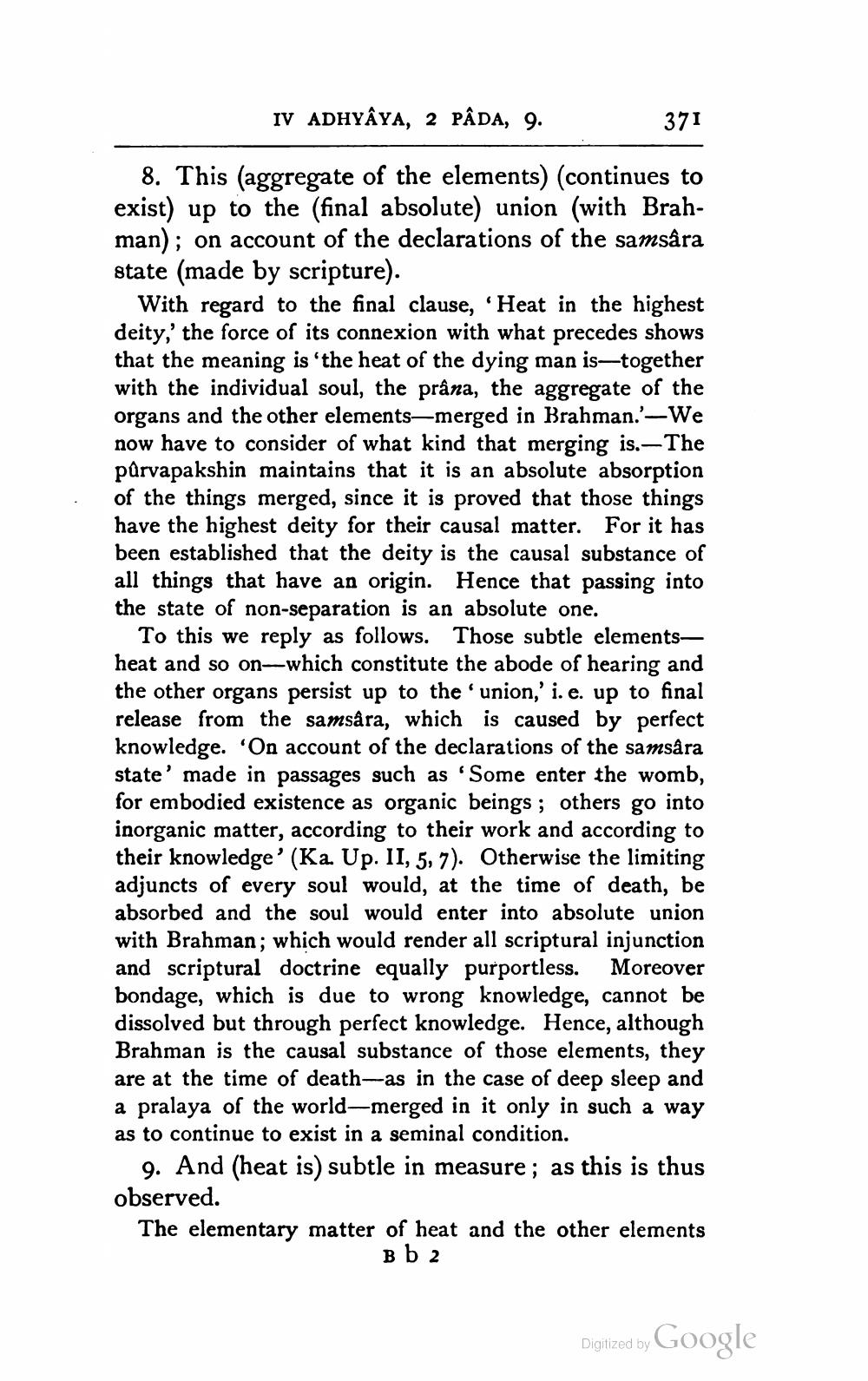________________
IV ADHYÂYA, 2 PÂDA, 9.
371
8. This (aggregate of the elements) (continues to exist) up to the (final absolute) union (with Brahman); on account of the declarations of the samsara state (made by scripture).
With regard to the final clause, 'Heat in the highest deity,' the force of its connexion with what precedes shows that the meaning is 'the heat of the dying man is—together with the individual soul, the prâna, the aggregate of the organs and the other elements—merged in Brahman.'—We now have to consider of what kind that merging is.-The purvapakshin maintains that it is an absolute absorption of the things merged, since it is proved that those things have the highest deity for their causal matter. For it has been established that the deity is the causal substance of all things that have an origin. Hence that passing into the state of non-separation is an absolute one.
To this we reply as follows. Those subtle elements, heat and so on-which constitute the abode of hearing and the other organs persist up to the union,' i.e. up to final release from the samsara, which is caused by perfect knowledge. "On account of the declarations of the samsara state' made in passages such as 'Some enter the womb, for embodied existence as organic beings; others go into inorganic matter, according to their work and according to their knowledge' (Ka. Up. II, 5, 7). Otherwise the limiting adjuncts of every soul would, at the time of death, be absorbed and the soul would enter into absolute union with Brahman; which would render all scriptural injunction and scriptural doctrine equally purportless. Moreover bondage, which is due to wrong knowledge, cannot be dissolved but through perfect knowledge. Hence, although Brahman is the causal substance of those elements, they are at the time of death-as in the case of deep sleep and a pralaya of the world—merged in it only in such a way as to continue to exist in a seminal condition.
9. And (heat is) subtle in measure; as this is thus observed. The elementary matter of heat and the other elements
B b 2
Digitized by
Digitized by Google




